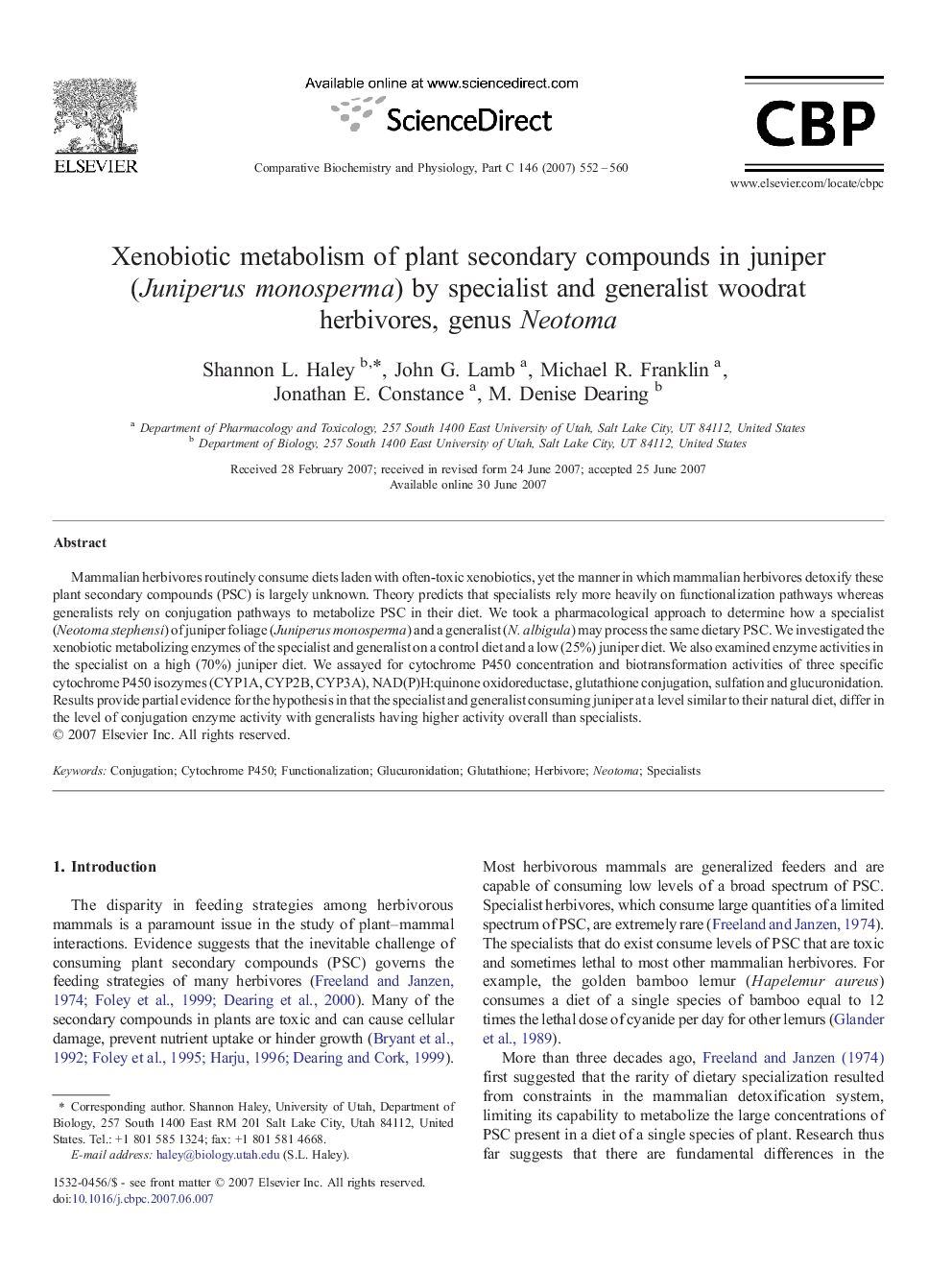| کد مقاله | کد نشریه | سال انتشار | مقاله انگلیسی | نسخه تمام متن |
|---|---|---|---|---|
| 1977915 | 1061517 | 2007 | 9 صفحه PDF | دانلود رایگان |

Mammalian herbivores routinely consume diets laden with often-toxic xenobiotics, yet the manner in which mammalian herbivores detoxify these plant secondary compounds (PSC) is largely unknown. Theory predicts that specialists rely more heavily on functionalization pathways whereas generalists rely on conjugation pathways to metabolize PSC in their diet. We took a pharmacological approach to determine how a specialist (Neotoma stephensi) of juniper foliage (Juniperus monosperma) and a generalist (N. albigula) may process the same dietary PSC. We investigated the xenobiotic metabolizing enzymes of the specialist and generalist on a control diet and a low (25%) juniper diet. We also examined enzyme activities in the specialist on a high (70%) juniper diet. We assayed for cytochrome P450 concentration and biotransformation activities of three specific cytochrome P450 isozymes (CYP1A, CYP2B, CYP3A), NAD(P)H:quinone oxidoreductase, glutathione conjugation, sulfation and glucuronidation. Results provide partial evidence for the hypothesis in that the specialist and generalist consuming juniper at a level similar to their natural diet, differ in the level of conjugation enzyme activity with generalists having higher activity overall than specialists.
Journal: Comparative Biochemistry and Physiology Part C: Toxicology & Pharmacology - Volume 146, Issue 4, November 2007, Pages 552–560